Apple's Bumper Case
The iPhone 4 is Apple's second product to launch with first party accessories. Like the iPad before it, the iPhone 4 is available with an Apple fabricated and sold case, dubbed the "bumper." At launch, this was the only case available. Most Apple stores (and online) only had black in inventory, though I'm told a few also had pink in stock. As of right now, the Apple store shows other colors shipping on July 16th - white, pink, orange, green, and blue eventually. I just went with black.
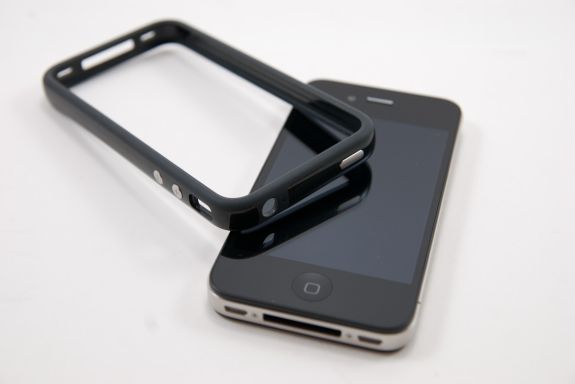
The bumper is an interesting beast. For $29.00, you get a hard plastic strip that runs atop the stainless steel antenna band, completely around the phone. On the outside of the hard plastic are two stiff rubber bands that seal over the side of the phone. If the Otterbox Defender is a bomb proof suit for iPhones, Apple's bumper is more like a slightly-scandalous bikini. It's literally just a continuous strip of material.
Apple brings the exterior metal volume and standby buttons out to the edge of the phone, and from what I can tell they're also metallic.
Buttons are metal and brought through the case, except the vibrate/silent switch.
Inside the case, there's a felt-like mask which rests atop the buttons and aligns itself up. It works surprisingly well, and the buttons feel like those on the device itself. There's no gap inbetween - hey, the buttons just work.
Putting it on is a little bit of a struggle. I've found the best way is to insert the top, standby button side first (so you don't accidentally turn it on and off while inserting it), and then shove the bottom part in. After you've got it in, there's just a bit of massaging to get the rubber seats settled, and then you're good to go. It's very snug, there's no flexing.
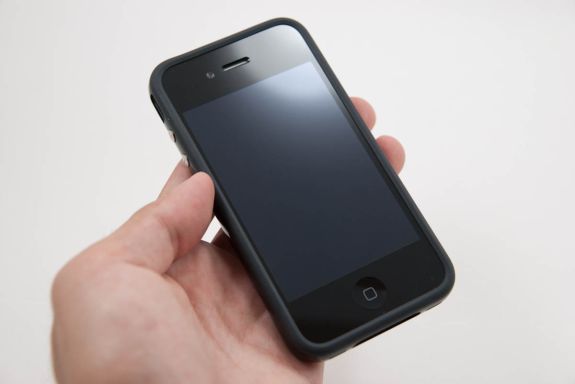
At the top, there's a break in the hard plastic for the headset jack. Instead, this is entirely rubber. No doubt this is to allow jacks that come out and have a 90 degree bend to be inserted, something we're all too familiar with being a problem on previous iDevices. There's a tiny hole next to it you want to be absolutely certain isn't blocked for the noise canceling microphone.
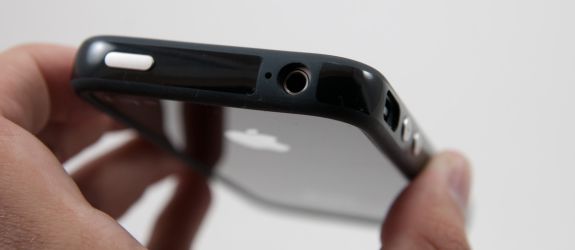
The nice thing about the rubberized strips is that you get a grippy surface to hold the phone with, and you raise the front and back glass panes about a millimeter off the surface you're resting it on when you lay it down flat.
The idea of having a glass back is fine and dandy until you lay the iPhone on another glass surface directly. The result (if both surfaces are very clean) is that the two will come in optical contact and become very hard to pry apart. It's the same sort of reason coasters aren't glass - the two seal together, and become difficult to separate. Not to mention any particulates underneath will make those hairline scratches (sleeks) I talked about before. Even the strongest of glasses will get micro scratches when rubbed in optical contact with other glasses. It's obvious that raising both the front and back were design objectives here.
Look ma, I can rest the phone face down and not scratch it up!
Apple's bumper case is unique that it doesn't cover the back of the phone. At all. If you prefer a case that covers every square inch of the device and offers total protection, don't get the bumper and instead wait for something else. If you want to show off as much of the iPhone 4's design as possible, Apple has done it with the bumper. If you already purchased an iPhone 4, well, you know that outside of a plastic bag or a rubber band, the bumper is really the only option.
Like we talked about before, the other hugely notable benefit is that the bumper insulates the stainless steel band from being detuned by your meatbag extremities (read: hands). Instead of a 24 dB drop, you'll incur a 10 dB drop completely in line with every other cellular phone ever made.
The only problem with the bumper is the dock connector port. It's about a millimeter too small.
That doesn't fit inside. Frustrating? Yes.
The unfortunate result is that all of my third party accessories don't fit. My Alpine iDA-X001 head unit in the car, three different vehicle accessory port car chargers with dock connectors, all my third party cables, and not to mention docks all don't fit.
If you've rolled with other cases, this is an all too familiar story that seems to repeat every single release, but it's frustrating in this case because the connectors don't match up by seriously under a millimeter. You can jam the dock connector in, but it doesn't go far enough inside to snap into place, and comes right back out.
The result is that I drive around with the bumper case halfway off, like this:
It's not the end of the world, but I would have to file down that edge a half millimeter on both sides to make my accessories work again. Considering just how much the bumper improves signal and protects against accidental scratching, it's arguably a must have accessory. One that should maybe be given away with every iPhone 4 purchase. But you already know our thoughts on that.
No doubt within a month or two the usual assortment of iPhone cases will pop up again, tweaked to meet the iPhone 4's slightly thinner dimensions. For now, however, the bumper is essential.



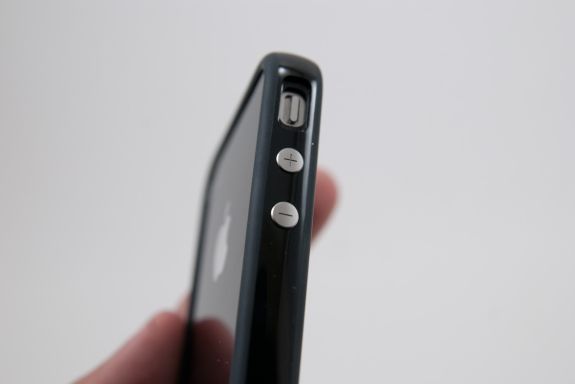


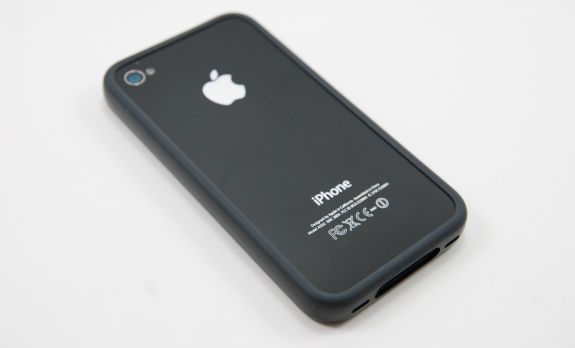
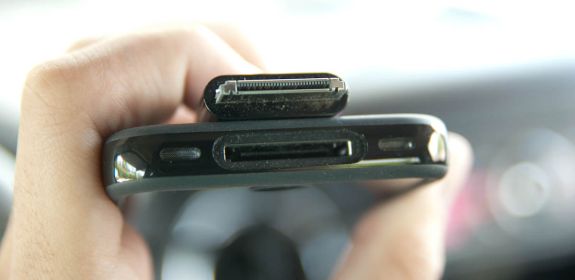
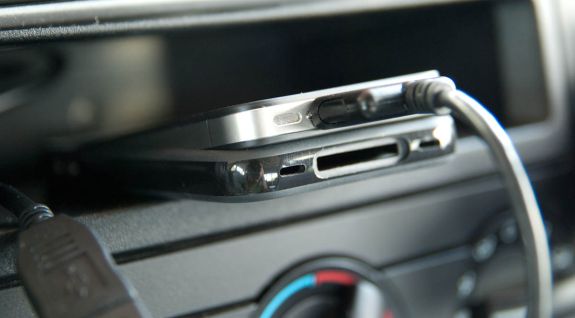








270 Comments
View All Comments
noiserr - Friday, July 2, 2010 - link
I am getting really tired of people who have no clue what OS X actually is.Android is much more similar to OS X than Windows. OS X is based on an Open Source kernel for starters and both Android and OS X are *nixes, OS X also uses open standards (OpenGL vs. DirectX for instance).
OS X is in many ways much more configurable and open than Windows, compare how many file systems Windows supports vs. those OS X does.
Apple is foremost a hardware company. They strive to create tightly integrated devices which come at the price of less configurability but they are renowned for their intuitive UI and ease of use. You may disagree with it but you can't argue against the fact that It's a business model that has served Apple well.
Personally I am a geek. I also write code for a living, while I do indeed like Android a lot when it comes to my phone I just don't care nor do I have time to tinker with it.
Mr Alpha - Wednesday, June 30, 2010 - link
"If there's one thing I hope the iPhone 4 display does, it's generate demand for 300 PPI level desktop displays - the era of 110 PPI displays being the norm needs to end now."Hear, hear!
Griswold - Wednesday, June 30, 2010 - link
I dont want ppi inflated desktop screens. Ive tried to work with them and they are an utter failure for me.Zan Lynx - Wednesday, June 30, 2010 - link
I used to use a 150 DPI laptop screen. It was excellent.Blame your lousy desktop software, not the beautiful screens.
fabarati - Wednesday, June 30, 2010 - link
Haven't read through all of it yet, but the contrast part on the first page seems to be in the wrong place, or we're missing a whole section there. I'll add more stuff as I find them.fabarati - Wednesday, June 30, 2010 - link
ok, on the first display page, you write "They're both entirely conventions." It may just be my non-native english speaking that's shining through, but that seems to be lacking a few words.And It's hard to know who's writing what. In one section, Brian's the third party, in another, it's anand. Especially when you're comparing things, it makes it a little hard to follow.
fabarati - Wednesday, June 30, 2010 - link
Some minor niggles, like videocalls already existing in other regions over 3G (and being hugely impopular), and not being sure about it being the best camera (comparisons to other phones than those listed are needed, like some nokia, sony ericsson and samsung phones), but otherwise a very thorough and fair review.Good job!
Jittos - Wednesday, June 30, 2010 - link
I've been sensing Anandtech's bias towards Apple's product for quite sometimes. Especially in cases where there are direct comparisons between iPhone and Android. However, I've always enjoyed the scientific/ fact-based method of tests Anandtech uses.Now please correct me if I misunderstood the article, but from what I'm reading in the signal strength comparison, it's iPhone 4 IN A CASE vs iPhone 3GS vs Nexus One? Why only test iPhone 4 in a case? Why not also show the results of iPhone without the case? I'm asking this so that we can all see how the iPhone 4 performs under various scenarios. Many iPhone users prefer to not put their beautiful device in a rubber case.
IF Anandtech indeed intentionally omit the test results for iPhone without case just so that iPhone 4 can have good looking results, then I lose all respect I have for Anandtech as a professionally run tech site. (so please correct me that I'm wrong)
Jittos - Wednesday, June 30, 2010 - link
OK, I re-read the article and I was wrong. sorry.Anadtech is still the best :)
piroroadkill - Wednesday, June 30, 2010 - link
Yeah, don't be so hasty.This is easily the best, and most technical article I've seen on the antenna problem yet.
It confirms it, and describes why people have varying experiences (the really, really non-linear bars.. my guess is those cutoff points WILL be changed in the next iOS build to mask the problem) and compares it reasonably to other devices, which do show the problem, but much, much less.
I'd love to say this would silence everyone, but I know there will still be irrational people, who, in the face of decent research, will still argue their point with no basis at all.
Thank you Anand. You do come across as gushing over Apple products recently.. but even so, this was a decent article.